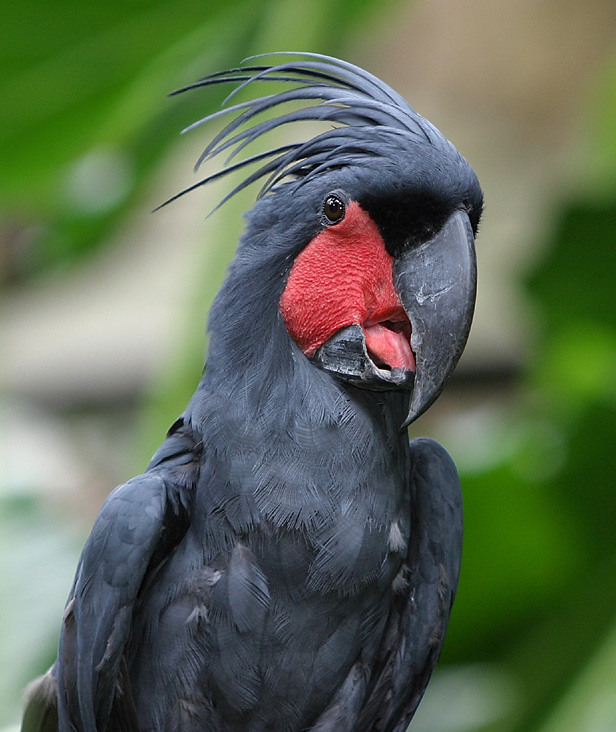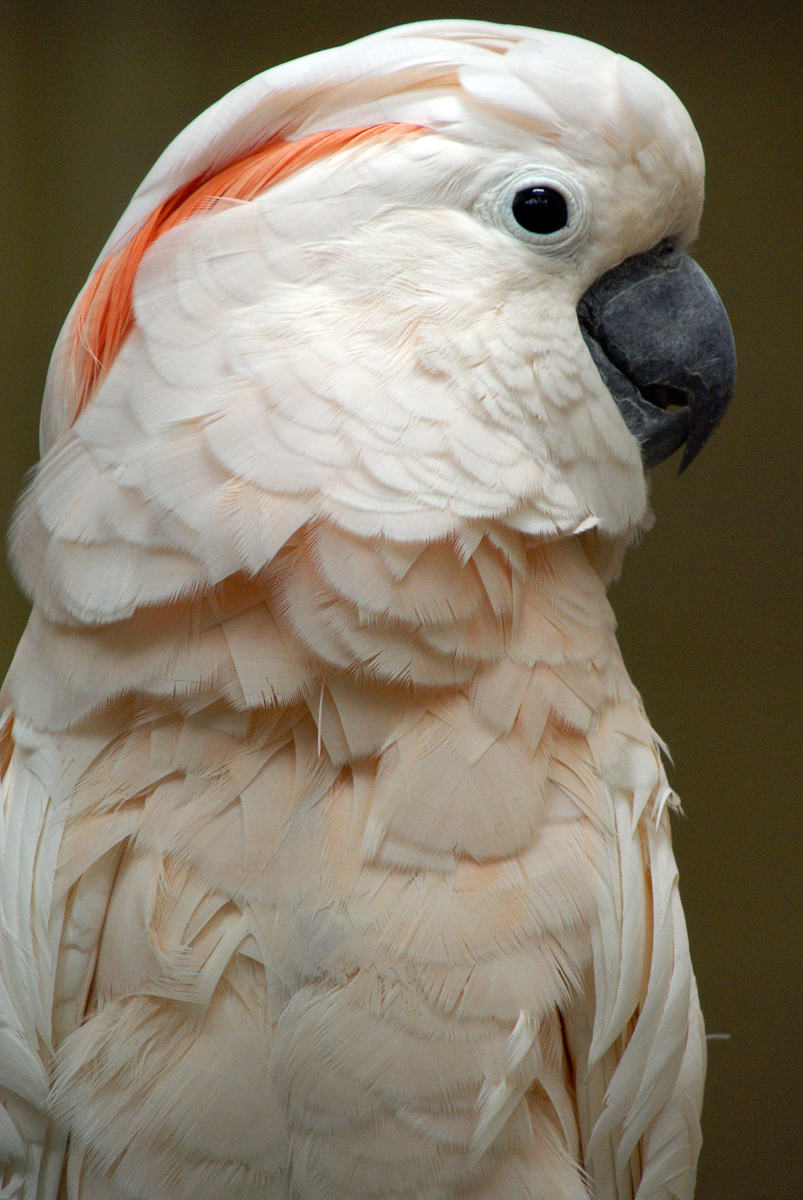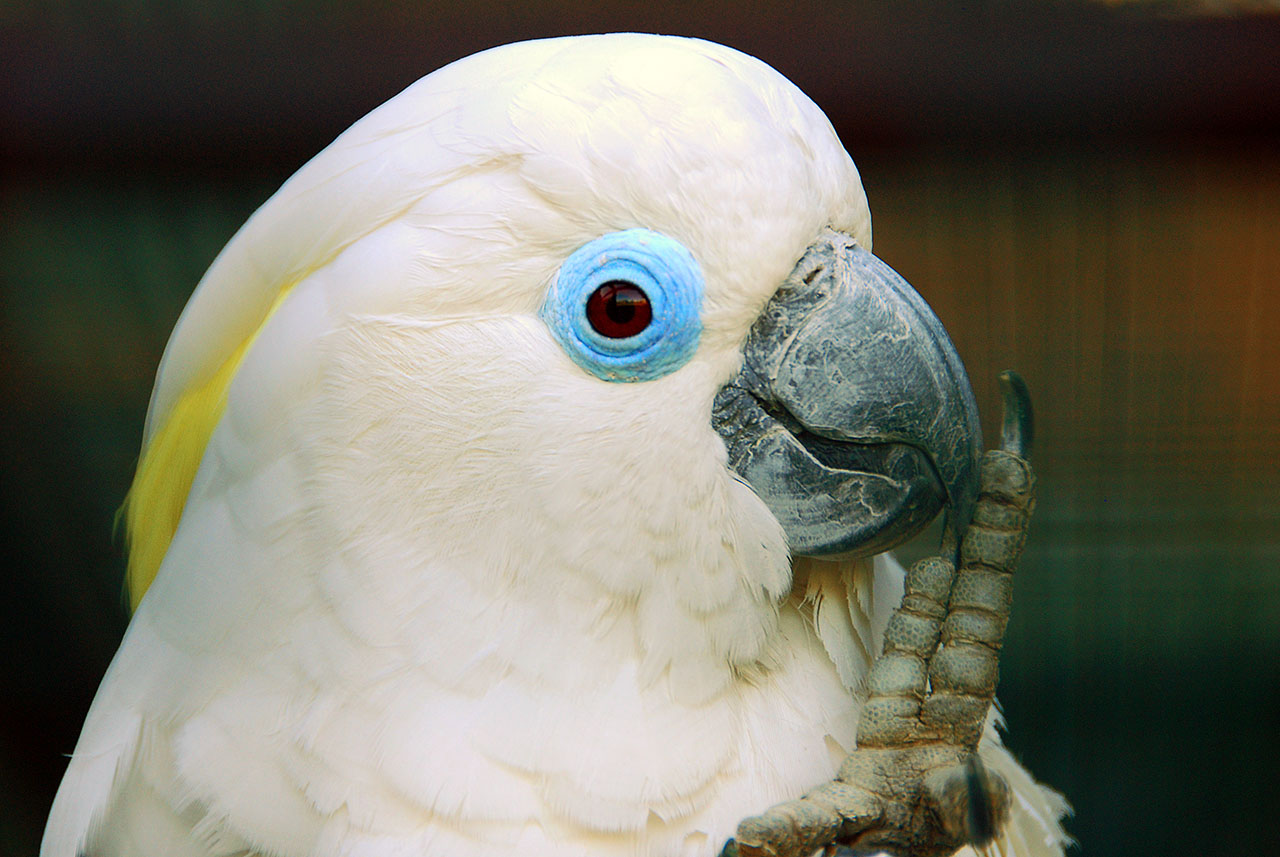|
Cacatua
''Cacatua'' is a genus of cockatoos found from the Philippines, Indonesia, Papua New Guinea, and Solomon Islands to Australia. They have a primarily white plumage (in some species tinged pinkish or yellow), an expressive crest, and a black (subgenus '' Cacatua'') or pale (subgenus '' Licmetis'') bill. Today, several species from this genus are considered threatened due to a combination of habitat loss and capture for the wild-bird trade, with the blue-eyed cockatoo considered vulnerable, Moluccan cockatoo, and umbrella cockatoo considered endangered, and the red-vented cockatoo and yellow-crested cockatoo considered critically endangered. Taxonomy Although the name ''Cacatua'' was used in 1760 by French zoologist Mathurin Jacques Brisson, he did not include it in his table of genera and Brisson is not recognised as the authority by the International Commission on Zoological Nomenclature (ICZN). The genus ''Kakatoe'' was introduced by Georges Cuvier in 1801 but this name has ... [...More Info...] [...Related Items...] OR: [Wikipedia] [Google] [Baidu] |
Cacatoes Sp MHNT
A cockatoo is any of the 21 species of parrots belonging to the family (biology), family Cacatuidae, the only family in the Superfamily (biology), superfamily Cacatuoidea. Along with the Psittacoidea (true parrots) and the Strigopoidea (large New Zealand parrots), they make up the order (biology), order Psittaciformes. The family has a mainly Australasian distribution, ranging from the Philippines and the eastern Indonesian islands of Wallacea to New Guinea, the Solomon Islands and Australia. Cockatoos are recognisable by their prominent Crest (feathers), crests and curved beak, bills. Their plumage is generally less colourful than that of other parrots, being mainly white, grey, or black and often with coloured features in the crest, cheeks, or tail. On average, they are larger than other parrots; however, the cockatiel, the smallest cockatoo species, is medium-sized. The phylogenetic position of the cockatiel remains unresolved, except that it is one of the earliest offsho ... [...More Info...] [...Related Items...] OR: [Wikipedia] [Google] [Baidu] |
Cockatoo
A cockatoo is any of the 21 species of parrots belonging to the family Cacatuidae, the only family in the superfamily Cacatuoidea. Along with the Psittacoidea ( true parrots) and the Strigopoidea (large New Zealand parrots), they make up the order Psittaciformes. The family has a mainly Australasian distribution, ranging from the Philippines and the eastern Indonesian islands of Wallacea to New Guinea, the Solomon Islands and Australia. Cockatoos are recognisable by their prominent crests and curved bills. Their plumage is generally less colourful than that of other parrots, being mainly white, grey, or black and often with coloured features in the crest, cheeks, or tail. On average, they are larger than other parrots; however, the cockatiel, the smallest cockatoo species, is medium-sized. The phylogenetic position of the cockatiel remains unresolved, except that it is one of the earliest offshoots of the cockatoo lineage. The remaining species are in two main clades. ... [...More Info...] [...Related Items...] OR: [Wikipedia] [Google] [Baidu] |
White Cockatoo
The white cockatoo (''Cacatua alba''), also known as the umbrella cockatoo, is a medium-sized all-white cockatoo endemic to tropical rainforest on islands of Indonesia. When surprised, it extends a large and striking head crest, which has a semicircular shape (similar to an umbrella, hence the alternative name). The wings and tail have a pale yellow or lemon color which is exposed when they fly. It is similar to other species of white cockatoo such as yellow-crested cockatoo, sulphur-crested cockatoo, and salmon-crested cockatoo, all of which have yellow, orange or pink crest feathers instead of white. Names The white cockatoo is known as ''ayab'' (plural form: ''ayot'') in the Burmeso language of Papua, Indonesia. Taxonomy The white cockatoo was first described in 1776 by German zoologist Philipp Ludwig Statius Müller. Its species name ''alba'' is a feminine form of the Latin adjective ''albus'' for "white". It lies in the subgenus '' Cacatua'' within the genus '' Cac ... [...More Info...] [...Related Items...] OR: [Wikipedia] [Google] [Baidu] |
Cacatua Galerita
The sulphur-crested cockatoo (''Cacatua galerita'') is a relatively large white cockatoo found in wooded habitats in Australia, New Guinea, and some of the islands of Indonesia. They can be locally very numerous, leading to them sometimes being considered pests. A highly intelligent bird, they are well known in aviculture, although they can be demanding pets. Subspecies There are four recognised subspecies: A 2024 genetic study found that the Triton cockatoo is genetically distinct from the two Australian forms of sulphur-crested cockatoo and should therefore be considered a separate species, ''Cacatua triton''. Description Sulphur-crested cockatoos are long, with the Australian subspecies larger than subspecies from New Guinea and nearby islands. The plumage is overall white, while the underwing and -tail are tinged yellow. The expressive crest is yellow. The bill is black, the legs are grey, and the eye-ring is whitish. Males typically have almost black eyes, whereas th ... [...More Info...] [...Related Items...] OR: [Wikipedia] [Google] [Baidu] |
Cacatua (subgenus)
''Cacatua'' is a subgenus of the white cockatoos (genus ''Cacatua''). They are found in wooded habitats from Wallacea east to the Bismarck Archipelago and south to Australia. With the exception of the yellow-crested cockatoo, all are relatively large cockatoos with a total length of 45–55 cm (18–22 in). Their plumage is mainly white (tinged pinkish in the salmon-crested cockatoo), and the underwing and -tail have a yellowish tinge. Their crest is expressive and brightly coloured in most species. Unlike the members of the subgenus '' Licmetis'', the members of the subgenus ''Cacatua'' have a black bill. The sulphur-crested cockatoo is relatively widespread and can even be seen in suburban habitats in some parts of its range, but the remaining members of this subgenus all have relatively small distributions and are considered threatened by the IUCN due to a combination of habitat loss and capture for the wild bird trade. Species * Yellow-crested (or lesser sulphur-cr ... [...More Info...] [...Related Items...] OR: [Wikipedia] [Google] [Baidu] |
Salmon-crested Cockatoo
The salmon-crested cockatoo (''Cacatua moluccensis''), also known as the Moluccan cockatoo, is a cockatoo endemic to the Seram archipelago in eastern Indonesia. At a height of up to and weight of up to , it is among the largest of the white cockatoos. The female is slightly smaller than the male on average. It has white-pink feathers with a definite peachy glow, a slight yellow on the underwing and underside of the tail feathers and a large retractable recumbent crest, which it raises when threatened, revealing hitherto concealed bright red-orange plumes to frighten potential attackers. It may also be raised in excitement or in other "emotional" displays. Some describe the crest as "flamingo-colored". It also has one of the louder calls in the parrot world and in captivity is a capable mimic. In the wild, the salmon-crested cockatoo inhabits lowland forests below 1000 m. Its diet consists mainly of seeds, nuts, and fruit, as well as coconuts. Some additional evidence sho ... [...More Info...] [...Related Items...] OR: [Wikipedia] [Google] [Baidu] |
Yellow-crested Cockatoo
The yellow-crested cockatoo (''Cacatua sulphurea'') also known as the lesser sulphur-crested cockatoo, is a medium-sized (about 34-cm-long) cockatoo with white plumage, bluish-white bare orbital skin, grey feet, a black bill, and a retractile yellow or orange crest. The sexes are similar. The yellow-crested cockatoo is found in wooded and cultivated areas of East Timor and Indonesia's islands of Sulawesi and the Lesser Sundas. It is easily confused with the largerBirdLife Species Factsheet retrieved 10 February 2010 and more common , which has a more easterly distribution and can be distinguished b ... [...More Info...] [...Related Items...] OR: [Wikipedia] [Google] [Baidu] |
Licmetis
''Licmetis'' is a subgenus of the white cockatoos (genus ''Cacatua''). They are collectively known as corellas in Australia. Three of the six species are primarily – or only – found in Australia, while the Philippines, Indonesia, and the Solomons each have an endemic species. They are relatively small cockatoos and – unlike the members of the subgenus ''Cacatua'' – all have pale bills. While most show yellow-tinged underwings and some red to the face, none has conspicuously coloured crests. Species *Long-billed corella, ''Cacatua (Licmetis) tenuirostris'' * Western corella, ''Cacatua (Licmetis) pastinator'' ** Muir's corella, ''Cacatua (Licmetis) pastinator pastinator'' ** Butler's corella, ''Cacatua (Licmetis) pastinator butleri'' *Little corella, ''Cacatua (Licmetis) sanguinea'' *Red-vented cockatoo The red-vented cockatoo (''Cacatua haematuropygia''), also known as the Philippine cockatoo and locally katala, abukay, agay, or kalangay, is a species of cockatoo. It is ... [...More Info...] [...Related Items...] OR: [Wikipedia] [Google] [Baidu] |
Yellow-crested Cockatoo
The yellow-crested cockatoo (''Cacatua sulphurea'') also known as the lesser sulphur-crested cockatoo, is a medium-sized (about 34-cm-long) cockatoo with white plumage, bluish-white bare orbital skin, grey feet, a black bill, and a retractile yellow or orange crest. The sexes are similar. The yellow-crested cockatoo is found in wooded and cultivated areas of East Timor and Indonesia's islands of Sulawesi and the Lesser Sundas. It is easily confused with the largerBirdLife Species Factsheet retrieved 10 February 2010 and more common , which has a more easterly distribution and can be distinguished b ... [...More Info...] [...Related Items...] OR: [Wikipedia] [Google] [Baidu] |
Citron-crested Cockatoo
The citron-crested cockatoo (''Cacatua citrinocristata'') is a medium-sized cockatoo with an orange crest, dark grey beak, pale orange ear patches, and strong feet and claws. The underside of the larger wing and tail feathers have a pale yellow color. The eyelid color is a very light blue. Both sexes are similar. Females have a copper colored eye where as the male has a very dark black eye. They are endemic to Sumba in the Lesser Sunda Islands in Indonesia. The diet consists mainly of seeds, buds, fruits, nuts and herbaceous plants. In 2022, Birdlife International recognized the citron-crested cockatoo as a separate species, ''Cacatua citrinocristata'', assessed as Critically Endangered, while the International Ornithological Congress designated it to be a species in 2023. Conservation status The citron-crested cockatoo is a critically endangered bird whose population has declined due to habitat loss and illegal trapping for the cage-bird trade. A 1993 survey of Sumba estimat ... [...More Info...] [...Related Items...] OR: [Wikipedia] [Google] [Baidu] |
Blue-eyed Cockatoo
The blue-eyed cockatoo (''Cacatua ophthalmica'') is a large, mainly white cockatoo about long with a mobile crest, a black beak, and a light blue rim of featherless skin around each eye that gives this species its name. Like all cockatoos and many parrots, the blue-eyed cockatoo can use one of its zygodactyl feet to hold objects and to bring food to its beak whilst standing on the other foot. Among bird species as a whole, this is relatively unusual. Description The blue-eyed cockatoo is a large, about 50-cm-long, mainly white cockatoo with an erectile yellow and white crest, a black beak, dark grey legs, and a light blue rim of featherless skin around each eye, that gives this species its name. The sexes are very similar in appearance. Some males have dark brown irises and some females have reddish-brown irises, but this small difference is not always reliable as a sex indicator. The blue-eyed cockatoo is easily mistaken for the yellow-crested and sulphur-crested cockato ... [...More Info...] [...Related Items...] OR: [Wikipedia] [Google] [Baidu] |






